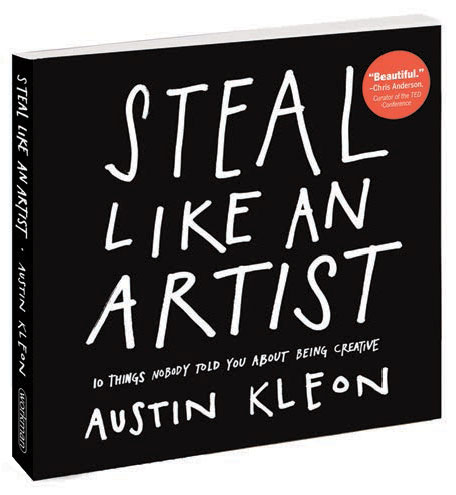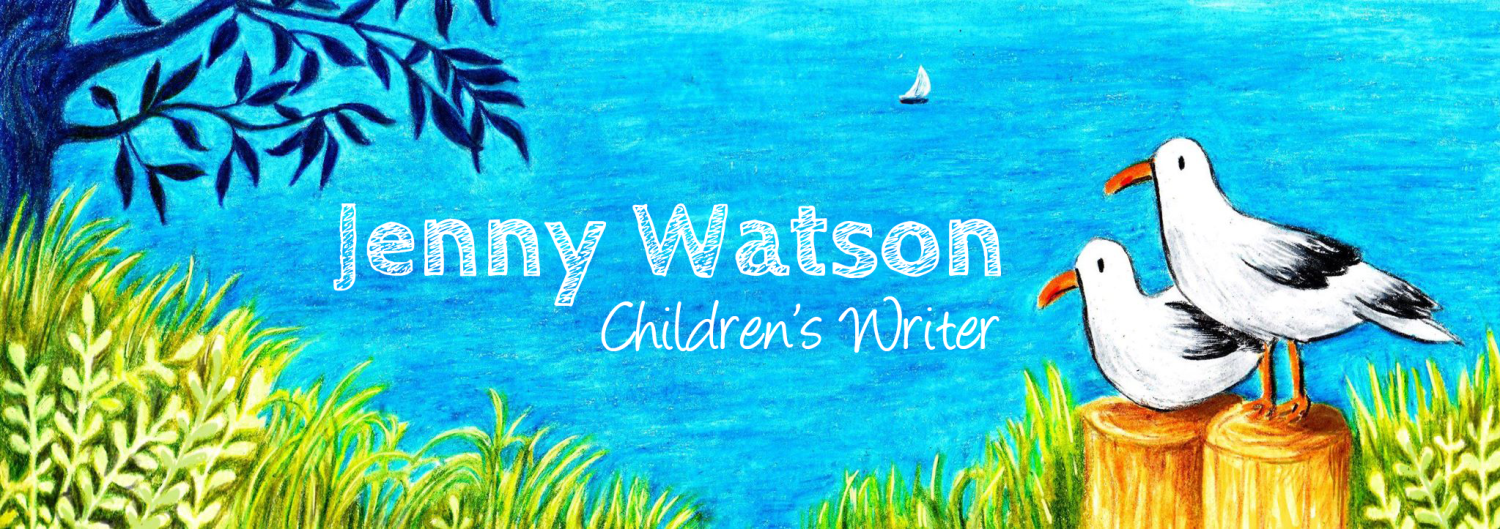
I’ve just finished reading Steal Like An Artist by Austin Kleon and highly recommend it as a thought-provoking read.
Kleon talks about the idea that nothing is original, that all creative work is simply the sum of ideas we’ve pulled from all over the place and combined into a new form (we’re not talking about plagiarism, which is copying a piece of writing without giving any sort of attribution). Even though I take ideas from lots of different sources, this book made me much more aware of how other writers recycle and reuse ideas. It seems so obvious in historical fiction and fiction based on mythology. But now that I’m looking for it, I’m seeing it everywhere.
For example, in The Blinding Knife, Brent Weeks twists the concept of a golem, an animated being created from inanimate matter, into an animal directed by the will of a person.
Another of Kleon’s principles is that “creativity is subtraction”. By this he means we should place constraints on ourselves, because “limitations mean freedom.” One example he uses to support this principle comes from the work of Dr Seuss:
Dr. Seuss wrote The Cat in the Hat with only 236 words, so his editor bet him he couldn’t write a book with only 50 different words. Dr. Seuss came back and won the bet with Green Eggs and Ham, one of the bestselling children’s books of all time.
I frequently use constraints (yes, I’m an outliner not a pantser!). Sometimes that’s in the form of word count. If I set myself a word count for a chapter, it forces me to get to the point more quickly, or the chapter will be over before anything has happened. I think this is useful for children’s fiction, where chapters often need to be short, snappy, and packed with action.
But I know lots of writers who prefer to write with complete freedom, without any constraints. As with all things writing, there are endless ways of doing the work.
How about you? Do you put constraints on your writing, or do you just write and worry about structure later?

Hi Jenny! This sounds like a great read. Thanks!
I’m mostly a pantser. While I try to set guidelines and come up with a chapter outline, I also need to deviate from those chapters and let stuff flow that I know I’ll have to edit later. In those moments of being in the flow, I learn new things about my characters and am sometimes taken to directions I could never plan. But then I have to get back to my plan. I think there’s as many different processes as there are writers, and I find everyone’s process so interesting.
Though I wish I could be a plotter/planner, I still need my pants moments. Ironically, I think this is also how I live my life. 🙂
Hi Lisa 🙂
I like the look of his poetry too. He blacks out words in newspaper articles, leaving just the words he wants to express in the poem. I’d like to try that some time.
Some days I wish I was a pantser!
Jenny
Been traveling and working too hard; but saved this to comment.
Yes, I use constraints. When I don’t, the writing wanders, the mind wanders, and bad things happen. I’m the sort who does best with some form of duress.
I learned the value of constraints when I was a journalist, especially working as a reporter in radio with NPR. I once had 20 minutes to submit a major story. I called the studio after about 10 minutes and said I couldn’t do it. They said, “You have 10 minutes left.” My mind shifted into a gear I did not know I had – and now I have that gear forever.
But that’s only one aspect. There are also relationships in storytelling and poetry that are far from obvious. Being forced to sit within a small box forces you to find those relationships and make the most of them. Whether it’s words, or characters, or ideas, or plot points–they are things that will not be found otherwise.
It’s not that density and probity and scarcity are deterministic, however. You have to not just accept the limits, but to trust yourself to wander to the connections and the distances and the strength-in-numbers. Knowing just how tightly to bind yourself, like voice or style, is something every writer would do well to choose based on experience. It’s not enough to say “I want to be free!”; you have to understand that freedom means choosing your own limits and burdens, so that within that space, you can make your dreams come true.